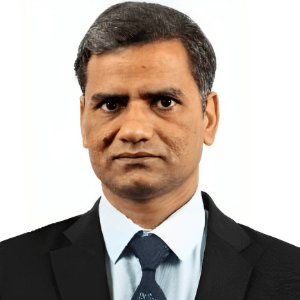Title : Reconfigurable antenna structures using tunable materials
Abstract:
The integration of tunable materials in reconfigurable antennas has been instrumental since the inception of microwave/mmWave technology. These materials, including phase shifters, resonators, and antennas, play a crucial role in applications demanding radiofrequency (RF) signal filtering, beamforming, and beam-steering. The emergence of wireless communications with wider bandwidth in 5G systems, satellite systems, and innovative radar systems has amplified the need for adaptability in frequency, radiation pattern, and polarization, marking a new era in wireless technology.As operating frequencies extend into the millimeter-wave range and beyond, conventional RF/microwave tunable components such as micro-electromechanical system(MEMS) switches, PIN diodes, ferrites, and ferroelectric films face performance degradation, increased fabrication complexity, and elevated costs. In response, liquid crystals emerge as a promising solution due to their attributes, including bias-based continuous dielectric constant tuning, lower dielectric constants, adequate losses, low dispersion, and potential cost-effectiveness. This presentation provides a comprehensive summary of tunable and liquid crystal materials, emphasizing key application-relevant properties, characterization techniques, and performance metrics, especially in the spectrum above 1 GHz. Recommendations for material selection in various RF/microwave/mmWave applications will be discussed, along with insights into observed experimental discrepancies and their potential sources. A reconfigurable microstrip antenna leveraging liquid crystal technology will be introduced for electronically switching between linear and dual-sense circular polarization. The antenna comprises a square patch radiator with a single feed and a liquid crystal cavity. In this innovative design, liquid crystal cavities are strategically integrated into the substrate along diagonal lines, allowing the utilization of parasitic small patches for biasing and facilitating seamless switches between linear and circularly polarized radiations.The ongoing progress in electronic technology and material science presents an exciting opportunity todesign reconfigurable wireless communication devices that are not only variable frequency and flexible but also energy-efficient. The presentation delves into the exploration of liquid crystal materials in their dielectric constant function of biasing voltage for designing reconfigurable antennas. Emphasis is placed on the controlled reconfiguration of frequency response and beam steering through biasing voltage on tunable material-based antenna structures. Specific examples of reconfigurable antennas based on liquid crystals, such as leaky-wave antennas, array antennas, and circularly polarized antennas, will be discussed in detail, providing valuable insights into their applications and potential advancements in the field.


